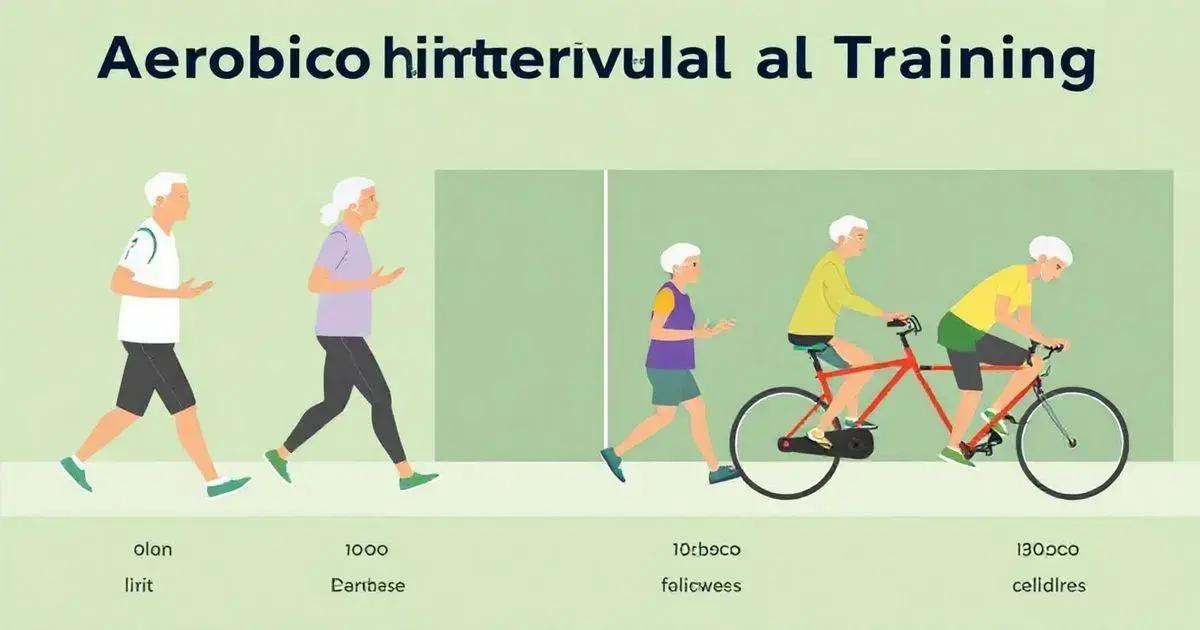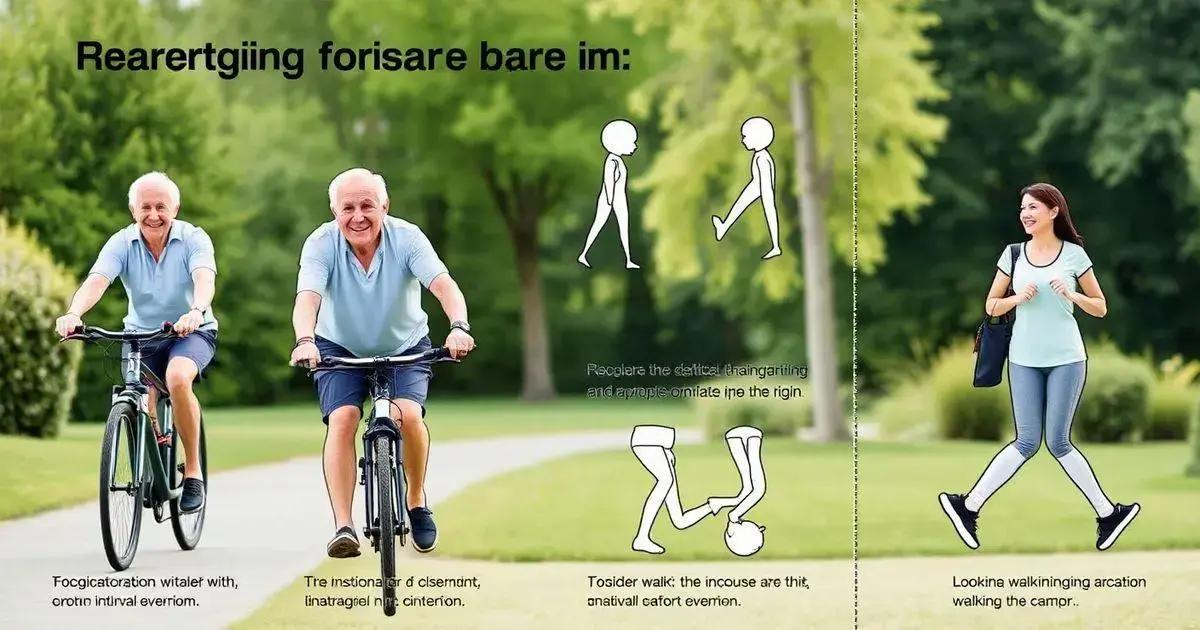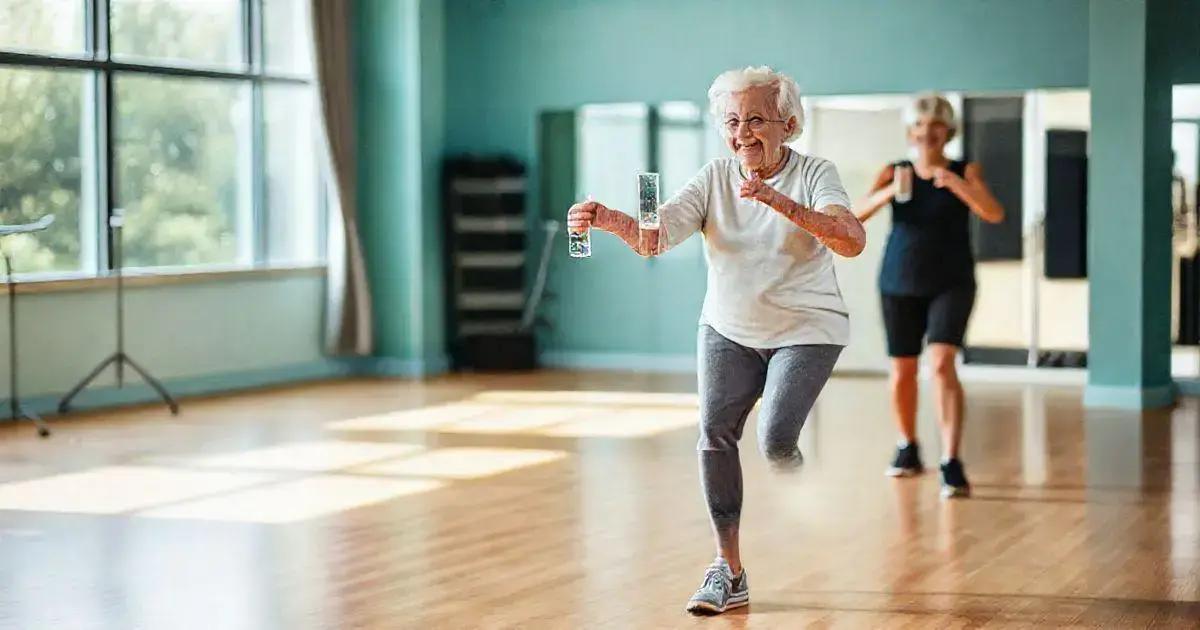Aerobic intervals are effective for active aging, providing numerous benefits such as improved cardiovascular health, enhanced endurance, and better mental well-being. Incorporating them into your routine safely, with proper guidance and listening to your body, can lead to a healthier and more fulfilling life as you age.
As we age, maintaining an active lifestyle is crucial for our overall health. One effective method to promote wellbeing in older adults is through aerobic intervals. This approach not only enhances cardiovascular fitness but also improves endurance and strength. In this article, we will delve into what aerobic intervals are, their specific benefits for aging individuals, how to incorporate them into your routine, and important safety tips to keep in mind.
What are Aerobic Intervals?

Aerobic intervals refer to a type of exercise that alternates between periods of high intensity and lower intensity, focusing primarily on cardiovascular conditioning. This training method is beneficial for people of all ages, including older adults looking to enhance their fitness routines.
How Aerobic Intervals Work
During aerobic interval training, you engage in short bursts of intense activity, followed by periods of recovery or lower intensity movement. For example, you might walk briskly for one minute, then slow down for two minutes. This pattern helps maximize the benefits of cardiovascular exercise without over-exerting oneself.
Examples of Aerobic Intervals
Common aerobic intervals can include walking, cycling, or swimming. For instance, you can cycle at a moderate pace for two minutes, followed by a minute of cycling as fast as you can. Alternating between these levels of intensity boosts heart rate and burns more calories.
Why Aerobic Intervals Matter for Older Adults
As we age, our bodies may experience a decline in endurance and muscle mass. Aerobic intervals can help combat these changes by improving cardiovascular health, enhancing stamina, and even helping to manage weight. Including this training approach in your fitness routine provides substantial health benefits while being adaptable to your individual fitness level.
Benefits of Aerobic Intervals for Older Adults

Aerobic intervals offer numerous advantages for older adults aiming to maintain their fitness and overall health. Here are some key benefits:
Improves Cardiovascular Health
Engaging in aerobic intervals can significantly boost heart health. By alternating between high and low-intensity activities, older adults can strengthen their heart muscle, improve blood circulation, and lower blood pressure. This type of training enhances the efficiency of the cardiovascular system.
Enhances Endurance and Stamina
As we age, our stamina may decrease. Aerobic intervals can help combat this decline by gradually increasing the ability to perform aerobic activities longer without fatigue. Improved stamina allows older adults to participate in daily activities with ease.
Supports Weight Management
Aerobic intervals can be an effective way to burn calories and maintain a healthy weight. The alternating intensities of this exercise boost metabolism, helping in weight loss or maintenance. Managing weight is crucial for preventing health issues related to obesity.
Mental Well-Being
Physical exercise is known to enhance mood and reduce symptoms of anxiety and depression. Aerobic intervals also promote the release of endorphins, which can improve emotional well-being. Regular engagement in these workouts may lead to better cognitive function and memory.
How to Incorporate Aerobic Intervals

Incorporating aerobic intervals into your routine is easy and can be tailored to your fitness level. Here are some steps to get started:
1. Choose Your Activity
You can select activities you enjoy, such as walking, cycling, swimming, or using an elliptical machine. Pick an activity that suits your interests and physical condition.
2. Start Slowly
If you are new to this type of exercise, begin with shorter intervals. For example, you can start with 20 seconds of higher intensity followed by 2 minutes of low intensity. As you build endurance, gradually increase the intensity and duration of the high-intensity segments.
3. Create a Schedule
Try to incorporate aerobic intervals into your routine 2-3 times per week. Consistency is key for making progress. Aim for 20-30 minutes per session, adjusting as needed based on your comfort level and fitness goals.
4. Listen to Your Body
It’s important to pay attention to how you feel during and after your workouts. If you experience pain or discomfort, take a break and evaluate your approach. Never push yourself too hard; the goal is to improve your fitness safely.
5. Mix It Up
Variation is essential for keeping your workouts interesting. Change up the activities, interval durations, and intensities regularly to challenge your body and prevent boredom.
Safety Tips for Aerobic Exercise in Aging

Staying safe while doing aerobic exercises is crucial for older adults. Here are some important safety tips to keep in mind:
1. Consult Your Doctor
Before starting any new exercise program, it’s essential to talk to your healthcare provider. They can help you understand any health conditions you might have and guide you on appropriate exercise levels.
2. Warm Up and Cool Down
Always begin with a warm-up of 5-10 minutes to prepare your body. Similarly, cool down for at least 5 minutes after exercising to help your body adjust to rest.
3. Stay Hydrated
Drinking water before, during, and after exercise helps prevent dehydration. Hydration is especially important for older adults as they may not feel thirsty even when their bodies need fluids.
4. Wear Proper Footwear
Using supportive and well-fitting shoes can help prevent injuries. Avoid exercising in flip-flops or worn-out shoes. Good footwear provides stability and cushioning.
5. Listen to Your Body
If you feel pain, dizziness, or shortness of breath, stop exercising and rest. It’s important to listen to your body and not push yourself beyond your limits.
6. Choose Safe Environments
When exercising outdoors, choose flat, even surfaces to avoid falls. If you are at home, ensure there are no obstacles in your path that could lead to tripping.
In Summary: Embracing Aerobic Intervals for Active Aging
Aerobic intervals play a vital role in promoting active aging by enhancing cardiovascular health, boosting endurance, and improving mental well-being.
By incorporating aerobic intervals into their exercise routines, older adults can experience significant health benefits while enjoying their workouts. It is essential to follow safety tips, remain aware of personal limits, and choose enjoyable activities to ensure a positive experience.
Remember that regular physical activity is key to maintaining a healthy lifestyle as we age. Elevating your fitness level with aerobic intervals can lead to a happier and more fulfilling life in your later years.
FAQ – Frequently Asked Questions about Aerobic Intervals and Active Aging
What are aerobic intervals?
Aerobic intervals are a type of exercise that alternates between high intensity and lower intensity activities, enhancing cardiovascular fitness.
How can aerobic intervals benefit older adults?
Aerobic intervals can improve cardiovascular health, enhance endurance, support weight management, and promote mental well-being in older adults.
How do I incorporate aerobic intervals into my routine?
You can start by choosing an enjoyable activity, practicing short intervals, and gradually increasing the intensity and duration over time.
What safety tips should I follow when exercising?
Consult your doctor, warm up and cool down, stay hydrated, wear proper footwear, listen to your body, and choose safe environments for exercising.
How often should older adults perform aerobic intervals?
Aim for 2-3 sessions of aerobic intervals per week, with each session lasting 20-30 minutes, adjusting as needed based on your comfort and fitness level.
What if I feel pain or discomfort during exercise?
If you experience pain, dizziness, or shortness of breath, stop exercising immediately and rest. It’s important to listen to your body.












